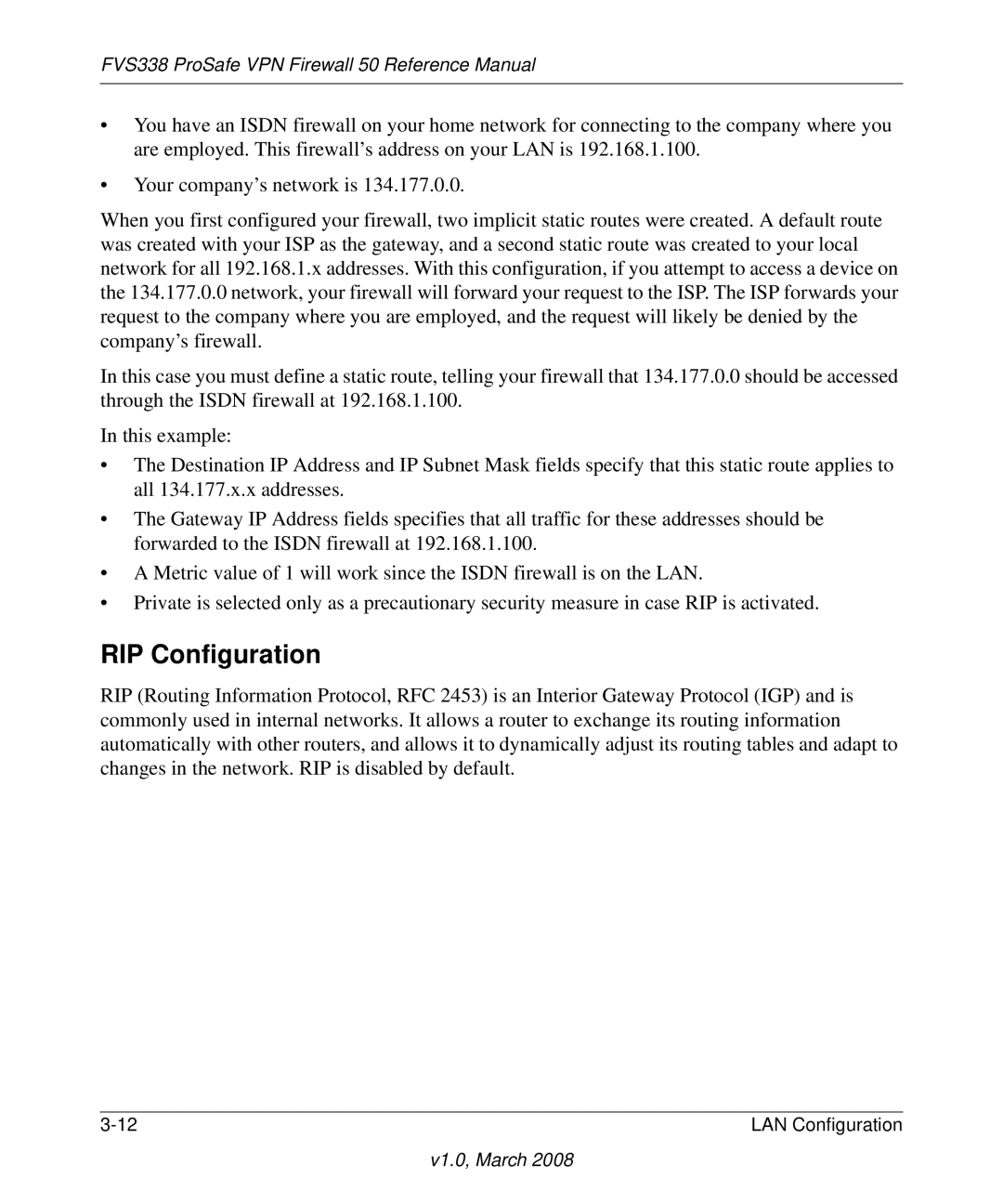FVS338 ProSafe VPN Firewall 50 Reference Manual
•You have an ISDN firewall on your home network for connecting to the company where you are employed. This firewall’s address on your LAN is 192.168.1.100.
•Your company’s network is 134.177.0.0.
When you first configured your firewall, two implicit static routes were created. A default route was created with your ISP as the gateway, and a second static route was created to your local network for all 192.168.1.x addresses. With this configuration, if you attempt to access a device on the 134.177.0.0 network, your firewall will forward your request to the ISP. The ISP forwards your request to the company where you are employed, and the request will likely be denied by the company’s firewall.
In this case you must define a static route, telling your firewall that 134.177.0.0 should be accessed through the ISDN firewall at 192.168.1.100.
In this example:
•The Destination IP Address and IP Subnet Mask fields specify that this static route applies to all 134.177.x.x addresses.
•The Gateway IP Address fields specifies that all traffic for these addresses should be forwarded to the ISDN firewall at 192.168.1.100.
•A Metric value of 1 will work since the ISDN firewall is on the LAN.
•Private is selected only as a precautionary security measure in case RIP is activated.
RIP Configuration
RIP (Routing Information Protocol, RFC 2453) is an Interior Gateway Protocol (IGP) and is commonly used in internal networks. It allows a router to exchange its routing information automatically with other routers, and allows it to dynamically adjust its routing tables and adapt to changes in the network. RIP is disabled by default.
LAN Configuration |
